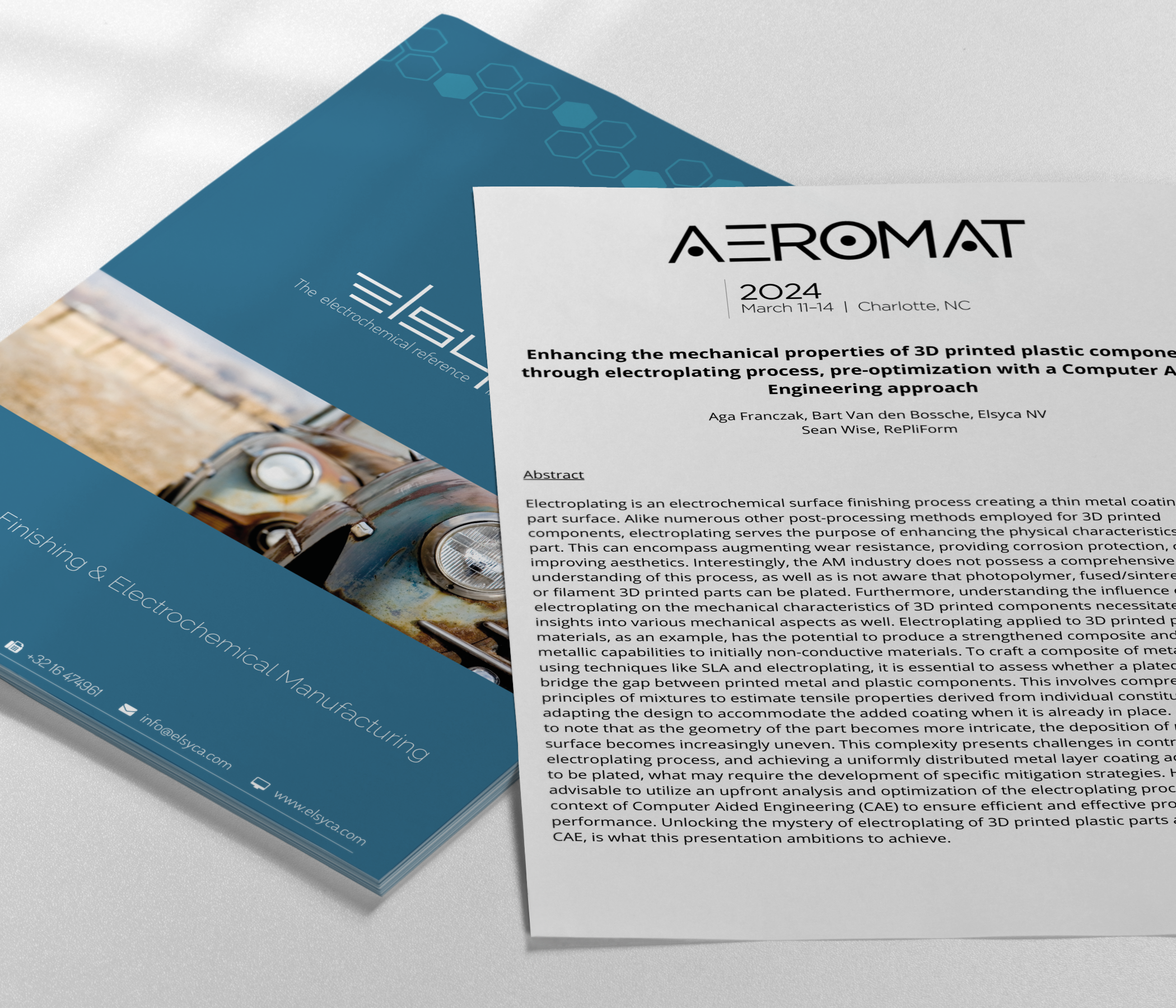
Enhancing the mechanical properties of 3D printed plastic components through electroplating process, pre-optimization with a Computer Aided Engineering approach (AEROMAT 2024)
AEROMAT 2024 presentation

Enhancing the mechanical properties of 3D printed plastic components through electroplating process, pre-optimization with a Computer Aided Engineering approach (AEROMAT 2024)
Aga Franczak; Bart Van den Bossche, Elsyca NV.
Sean Wise, RePliForm
Abstract
Electroplating is an electrochemical surface finishing process creating a thin metal coating on a part surface. Alike numerous other post-processing methods employed for 3D printed components, electroplating serves the purpose of enhancing the physical characteristics of the part. This can encompass augmenting wear resistance, providing corrosion protection, or simply improving aesthetics. Interestingly, the AM industry does not possess a comprehensive understanding of this process, as well as is not aware that photopolymer, fused/sintered powder or filament 3D printed parts can be plated. Furthermore, understanding the influence of electroplating on the mechanical characteristics of 3D printed components necessitates gaining insights into various mechanical aspects as well. Electroplating applied to 3D printed plastic materials, as an example, has the potential to produce a strengthened composite and introduce metallic capabilities to initially non-conductive materials. To craft a composite of metal and resin, using techniques like SLA and electroplating, it is essential to assess whether a plated plastic can bridge the gap between printed metal and plastic components. This involves comprehending the principles of mixtures to estimate tensile properties derived from individual constituents or adapting the design to accommodate the added coating when it is already in place. It is important to note that as the geometry of the part becomes more intricate, the deposition of metal on its surface becomes increasingly uneven. This complexity presents challenges in controlling the electroplating process, and achieving a uniformly distributed metal layer coating across all surfaces to be plated, what may require the development of specific mitigation strategies. Hence, it is highly advisable to utilize an upfront analysis and optimization of the electroplating process within the context of Computer Aided Engineering (CAE) to ensure efficient and effective process performance. Unlocking the mystery of electroplating of 3D printed plastic parts and the role of CAE, is what this presentation ambitions to achieve.
